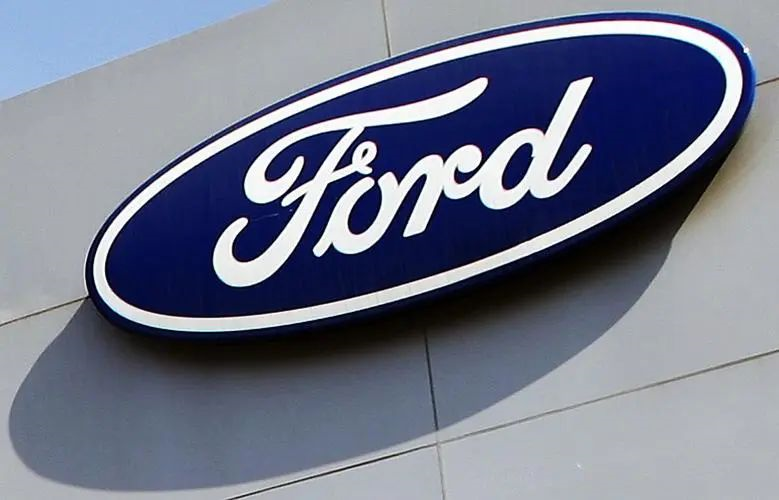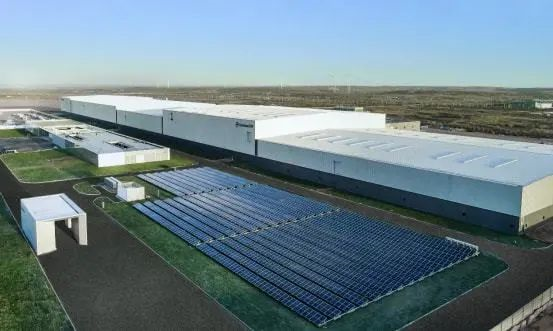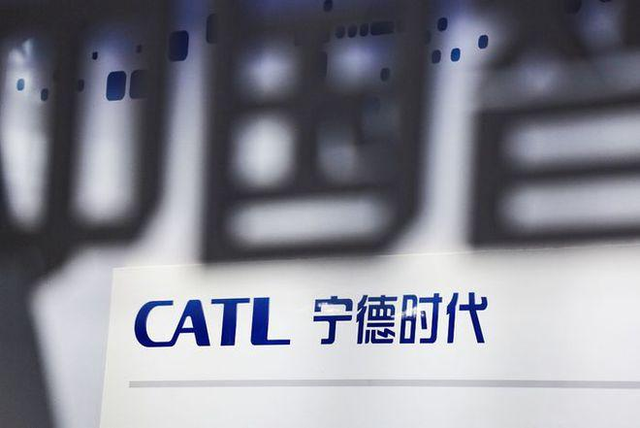Author | Wang Yunpeng
Although not without twists and turns, CATL’s “American Dream” has finally come to fruition.
On February 14, Valentine’s Day in the Western world, CATL and Ford announced simultaneously that they will invest USD 3.5 billion in Michigan, USA to build a factory for producing lithium iron phosphate batteries.
The factory is scheduled to start production in 2026, producing enough batteries for 400,000 electric vehicles annually, in line with Ford’s previous plan to achieve an annual electric vehicle production capacity of two million by 2026.
Regarding the specific operating mode, Ford will own the new factory through a wholly-owned subsidiary, instead of the previously speculated joint venture with CATL. CATL, on the other hand, will provide technical and service support for the factory’s production, while Ford engineers will be responsible for the integration of battery cells and vehicles.
“CATL will provide construction and operation services for its battery plant in Michigan and license battery patent technology.” said the person in charge of CATL.
In early 2022, CATL Chairman Zeng Yuqun stated that “CATL must enter the US market”. At that time, Zeng probably did not expect CATL’s “American Dream” to be realized in this way.
Previously, when building a factory in Germany, CATL invested and operated on its own. Now, however, in the US, CATL can only play the role of “providing services” and “technology output”, while Ford owns 100% of the factory’s shares. It is unclear how CATL feels about this.
This non-joint venture mode of cooperation enables the factory to avoid political controversy in the US and may be eligible for federal tax credits. Industry analysts believe that “this may be the best solution that CATL and Ford have come up with after considering various factors.”
According to data, CATL is currently the world’s largest electric vehicle battery manufacturer, with 13 factories of its own in Europe and Asia. However, its desire to build a factory in the US has not come to fruition, especially during the extremely sensitive period between China and the US. Therefore, this “marriage” with Ford may be a mild and reluctant way for CATL to enter the US market.
 ## Both sides are eager to collaborate
## Both sides are eager to collaborate
The collaboration between the old era’s automotive giant Ford and the new era energy giant CATL is highly anticipated.
Some say it’s a win-win, while others keep their reservations. The outcome of this issue is yet unclear, but one thing is certain – both sides are eager to collaborate.
From CATL’s perspective, it’s no secret that they have been eager to enter the US market. To expand their global business and enter the developed markets of Europe and the Americas, it can be beneficial for CATL to establish a brand image of technological and scale advantages, and mitigate the risk of “going local” from the domestic market.
On the other hand, Ford’s urgency can be seen in the fourth-quarter financial report of 2022. According to the report, Ford’s profit level fell short of expectations (2.51 billion USD), with a YoY decline in net profit of 89%, which amounts to 1.3 billion USD. The total net loss for the whole year has reached 2 billion USD.
To address the deteriorating performance, Ford’s solution is to control costs. Therefore, it conducted two rounds of layoffs, totaling thousands of employees in 2022, starting from the beginning of this year. But that is not all, as Ford announced on February 14th that it will lay off 3,800 employees, mainly engineers and managers, in Europe over the next three years.
“Ford is working hard to control costs and hopes to shave 3 billion USD in costs, with additional layoffs being a part of it,” said Ford CFO John Lawler during the telephone conference call following the release of the financial report.
However, is layoffs enough to control costs? The answer is no. Compared to the personnel expenses, cost control on the product end is even more critical. Especially in electric vehicles, power batteries, as one of the core components, account for nearly 40%-60% of the vehicle’s cost, which is twice the cost of the traditional fuel system.
Moreover, statistics show that the US market’s sales of electric vehicles surged by 66% in 2022, with Ford being the second-best-selling automaker after Tesla. The pressure to control costs in such a scenario can be immense.More importantly, starting in 2023, Tesla has triggered a global price war. To defend its limited market share, Ford had to announce price reductions for the Mustang Mach-E and F-150 Lightning. In fact, the profit margin for the Mustang Mach-E was not very high within Ford, and considering cost issues, it was difficult to keep up with the continuous price reductions of the Model Y.
In other words, Ford may have already reached the point where it cannot profit from these two electric products. Continuing to lower the price would undoubtedly be a double whammy for Ford, which is experiencing the pain of transitioning in the domestic market.
How to break free from this predicament? The solution is to reduce battery costs. The introduction of CATL’s battery technology is based on this consideration. It is understood that Ford and CATL’s new factory will produce batteries that include lithium, iron, and phosphate, or what we commonly refer to as lithium iron phosphate (LFP) batteries, as they do not use expensive components such as cobalt and nickel, which make the price of LFP batteries relatively cheaper. “LFP is the most cost-effective battery technology. This project can reduce the cost of electric vehicles and thus increase profits,” said Ford CEO Jim Farley.
“Phosphate iron lithium batteries produced by the new factory will be first applied to the Ford Mustang Mach-E, replacing the ternary lithium batteries previously used,” Ford said. According to industry estimates, the cost of using LFP batteries is 20% to 30% lower than ternary lithium batteries.
In other words, the introduction of LFP batteries can enable Ford to produce more and lower-cost electric vehicles, and help its electric vehicle business achieve a pre-tax profit rate of 8% by 2026. Meanwhile, according to the “Inflation Reduction Act,” Ford’s wholly owned battery factory can “outsource” to itself and not only enjoy tax breaks, but also allow buyers to qualify for tax deductions. For the company itself and its product end-market competitiveness, this is undoubtedly a great benefit.
In addition, the huge losses of the Argo AI autonomous driving project may also be one of the main reasons why Ford chose to introduce the mature battery production technology of CATL. After all, for Ford, which stands at the crossroads of transformation, there is not much room for trial and error. It is more appropriate to directly purchase mature products than to “gamble” on self-research, which is full of uncertainty.And from the perspective of battery supply chain security, Ford also urgently needs technical support from CATL. This move can not only bring more bargaining chips but also stabilize the supply chain and avoid potential risks.
This point reminds us of what happened in 2021 when the sales of Chevrolet Bolt in the United States stalled due to battery problems from LG Energy, leading to a large-scale recall. Although LG Energy bore most of the cost of the recall, the incident still had an impact on General Motors’ electric vehicle strategy execution and brand reputation.
Therefore, after introducing CATL, Ford can not only introduce relatively benign competition between SK On and CATL but also avoid a total collapse even if one of them encounters problems.
The Future Journey May Not Be Smooth
Ford provides funds and land, while CATL provides technology.
Although this cooperation model is different from that of South Korean and Japanese battery companies, such as LG Energy, SK On, and Panasonic, who bind customer automakers and jointly establish factories with them or invest in building factories in the United States, this is also an example of a successful entry of China’s new energy vehicle industry chain into the global market.
However, as the world’s largest electric vehicle battery supplier with 100,000 employees globally over the past six years, CATL’s road to globalization has just begun. Its entry into the United States is unlikely to stop at providing technology for Ford’s vehicles.

Having ambition and dreams is not a problem in itself, but the future journey of CATL in the United States may not be smooth. First, based on the cooperation with Ford, which sold only 65,000 electric vehicles in the United States in 2022, CATL’s market share contribution in the short term will not be significant.
Moreover, this cooperation model is also unfavorable for CATL, which has become a battery supplier for Tesla, BMW, and other automakers, to provide batteries for its cooperative partners in the US domestic market.## Secondly, compared to the simple technological output of CATL, Ford, General Motors and other automakers are stepping up their efforts to establish joint ventures with Japanese and South Korean companies. For example, Ford and SK On are building two battery factories in Kentucky and a third factory in Tennessee, while General Motors, in addition to a battery factory jointly owned with LG New Energy, is building factories in Tennessee and Michigan.
According to LG New Energy’s plan, its battery production capacity in North America will reach 55GWh by 2023. “By 2025, nearly half of all electric vehicles produced in the United States will be powered by LG New Energy batteries. Compared to Chinese automakers and component companies, South Korean companies are more familiar with local laws and regulations and have a corresponding reserve of talents,” according to SK Securities’ forecast.
In other words, Ford has not put all its “eggs in one basket,” while CATL currently only has Ford as its basket in the U.S.
Furthermore, there are also risks associated with CATL’s technological output in the industry. “The United States has always been at the forefront of technological capabilities and has many talented individuals. Will it develop new advanced technologies based on its strong basic scientific knowledge and advanced material technology? We do not know,” said some industry insiders.
In addition, in terms of battery technology, Cui Dongshu, Secretary General of the National Passenger Car Market Information Joint Conference, also said, “From an international perspective, Chinese battery technology is not leading, and its advantages are more in terms of price.”
Of course, the biggest uncertainty for Chinese power battery companies represented by CATL entering the U.S. market comes from policy. Recently, according to Reuters, the U.S. plans to completely ban investment in some Chinese companies and strengthen its review of other companies.
In other words, the United States’ decoupling behavior is accelerating, and its strangling of China’s high-tech companies is also intensifying. The impact on Chinese power battery companies such as CATL that want to or are already laying out the U.S. market is still unknown.”Going abroad” is a key step for Chinese power battery companies to participate in global competition, but the external competitive environment is complex, and the road ahead is not smooth.
At the same time, the “service provision” and “technology output” approach of CATL’s going abroad has a strategic significance that is actually greater than its commercial significance. However, for Chinese companies that want to go abroad, the ability to successfully break into the American automobile industry chain is undoubtedly a positive signal.
This article is a translation by ChatGPT of a Chinese report from 42HOW. If you have any questions about it, please email bd@42how.com.
